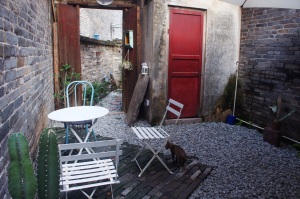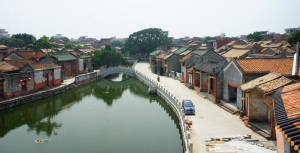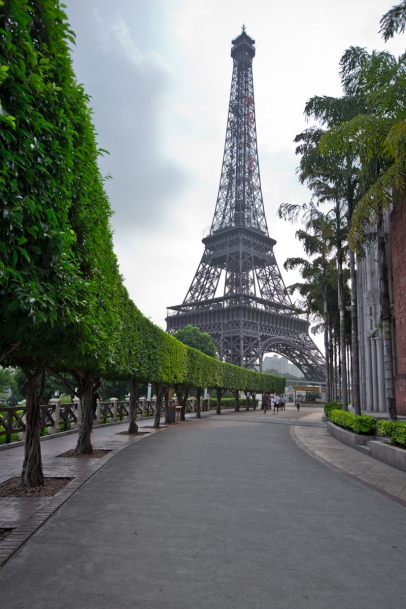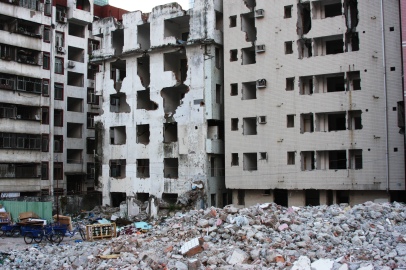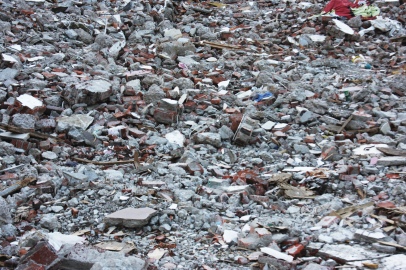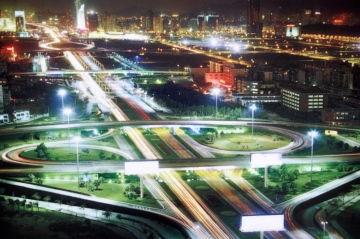“I fear all we have done is to awaken a sleeping giant and fill him with terrible resolve.”
-General Isoroku Yamamoto after the bombing of the United States Pacific Fleet at Pearl Harbor in December of 1941.
The Harvard-educated Yamamoto, quoted above, accurately predicted the insurmountable awakening of the United States industrial machine as a result of the attack on Pearl Harbor, which brought the United States into World War II and forever altered the international power structure of the 20th century. For the rest of the century, the United States would be the benchmark by which the rest of the world measured itself, in regards to economics, politics, infrastructure, and industrial might. That was then. This is now. At the dawn of the 21st century, the sleeping giant that was awakened by the Japanese at Pearl Harbor is asleep once again, sedated by complacency on the world stage. While the rising stars of China and India work steadfastly day and night to reach the plateau currently occupied by the red, white, and blue, the Lone Superpower nation squabbles within its ranks, letting the partisan politics of its Republic keep its eye within itself, not on the world around it.
The encapsulation of the nations current predicament can be seen in the topic of high-speed rail development. At present, China, amongst other top economies in the Asia, have, are developing various high-speed rail systems in order to lay a solid infrastructural foundation that is needed for their growing countries. This is not an Asian phenomenon though. Western Europe famously has one of the most thorough and efficient rail-networks in the world. Once one is in a European country, they have unlimited access to the rest of the continent by train, instead of by plane. It is cheaper and more efficient to move by train.
The U.S., however, has seen little logic or appeal for this infrastructure layer of high-speed rail. Why take a high-speed rail from Los Angeles to San Francisco when one of the many airlines can offer a relatively low price?
O, let me count the ways.
For examples-sake, let’s imagine that you are flying out of Los Angeles International Airport (LAX) for a business meeting in San Francisco. There’s no problem, the flight is only about an hour long, much faster than using any high-speed rail that would take about two hours and forty minutes (according to California High-Speed Rail Authority Development). But wait, there is that transit time just to get to LAX and then security, and knowing that there is guaranteed to be traffic in route, so you have to give yourself at least two hours just to get to the airport. So, in all, we are talking about three hours just to get to San Francisco International Airport, where you will then have to arrange for another travel means of getting to your business meeting inside the city, and not twenty minutes south of the city where the airport is. Then again, if you took the high-speed rail, not only could you have gotten to the Bay Area more quickly, but also then transferred to the efficient Bay Area Rapid Transit train system that would have brought you even closer to your destination. Not only is the high-speed rail connecting the major urban nodes of San Francisco to Los Angeles, but it is also connecting the two cities micro-transit systems.
::Poking the sleeping giant::
O.K., American Public, you are still not impressed with the fact that you would save more time and possibly money by taking the high-speed rail. A high-speed rail development would also boost the economic growth along the entire rail network. We are in a recession are we not? Imagine being able two live in central California and be able to work in either the San Francisco or Los Angeles area, without paying the often-outrageous living and property costs. It might take you an hour to get to work, but what’s the difference between spending an hour on the train and an hour stuck in traffic on the 405 Freeway. We have already seen the economic impact of Japan’s bullet train. According to the Shanghai Daily, the Shinkansen, connecting Tokyo and Osaka (two of Japan’s largest cities) has “rejuvenated rural towns that would otherwise be too distant from major cities.” Not only are “living costs lower [in the in-between areas], but residents can commute to either city while the city’s own business will be developed.” This practice has also been put into use in China, where a high-speed rail planned between Shanghai and Hangzhou will, according to article in the Shanghai Daily, “eventually integrate the cities and force Hangzhou businesses to become more competitive.”
This is known as the Dumbell Effect. You’ve seen it already, America, every time you go to your local malls. Have you not noticed how your Nordstrom’s, and your Macys chains anchor the ends of the mall, with smaller retailers in between? The larger retailers act as the points that draw you, the shopper, through the mall from one end to the other, with the in-between smaller retailers benefiting from this movement. Imagine that on more macro-scale, such as California.
::Poking the sleeping giant::
Are we starting to get the picture?
“No,” replies the airline industry, “the high-speed rail would kill our already fragile industry. We couldn’t take that competition.” Competition. Capitalism. Is that not what this country thrived on for so many decades? Competition not only with the rest of the world, but within ourselves, has made our country better as a whole. We live in an era of globalization, where not only are the world’s economies connecting with one another through trade and technology, but everything is shared, most of all information. We are living in an era of supermodernism, where our cities are growing similarly and facing the same problems as well. The sprawl of Los Angeles and the issues it is facing are some of the same ones that Beijing and Madrid are facing as well. There is bumper-to-bumper traffic on the streets alongside Tiananmen Square just as there is gridlock on the streets alongside Pershing Square.
::Punching the sleeping giant::
“O, China is a developing country. Of course they are going to have those types of problems.”
Then what is our excuse for having those problems? We are the Long Superpower! Even worse, what is our reason for doing little or nothing about it? Partisan, partisan, partisan. Democrat, Republican, Independent, Green Party, Tea Party: everyone wants to do it their way, or no way at all.
Randai O’Toole writes in his USA TODAY article “We can’t afford the luxury of high-speed rail,” about how the enormous cost of implementing a high-speed rail system is too high and not worth the cost. He writes how the $500 billion cost of President Barack Obama’s high-speed rail proposal is comparable to the $450 billion paid to the Interstate Highway System, “which provides more than 4,000 miles of passenger travel for every American, miles that Americans were not traveling before the system was built. Mr. O’Toole, when was the Interstate Highway system put in place? If my memory serves me correctly, it was after World War II. You’re going to sit there and write that an infrastructural system over half a century old is still serving our country adequately, even in a new century? Please tell that to millions of Los Angeles citizens who spend hundreds of hour in gridlock every year. And no, adding another lane to the 605 freeway is not going to alleviate traffic congestion enough so there is not traffic grid-lock seven days a week.
::Kicking the giant::
Mr. O’Toole goes on to make the claim the high-speed rail would only serve the urban elite.
“Since most high-speed rail stations will be in downtowns, the main users will be downtown workers such as lawyers, bankers, and government officials. Yet less than 8% of American jobs are in central city downtowns, meaning all Americans will subsidize trains used by only a small urban elite.”
So, Mr. O’Tool, are you saying that only the urban elite of New York utilizes the cities subway and commuter rail transit systems? Or how about how the upper class is the main user group on the Los Angeles metro lines everyday during rush hour? Recheck the demographics of public transportation user groups and you will find that fair majority of its users are of the lower and middle class.
“High-speed trains in Europe and Asia may be a boon to American tourists, but they haven’t proved transformational in those regions either. France and Japan have the world’s most extensive high-speed rail networks, yet their average residents ride the high-speed trains less than 400 miles a year.”
“Haven’t transformed those regions either.” Is Japan, along with the United States, one of the top economies in the world? Have you been to Tokyo, Mr. O’Toole? Perhaps one of the reasons that the average resident rides the high-speed train less than 400 miles a year is because the geographic area of Japan is only 145, 925 square miles with a population of 127 million people (that’s 873 people per square mile), compared that to the United States, with an area of 9.8 million square miles with a population of 310 million (83 people per square mile). It is also perhaps that more often than not, the average Japanese person’s home and work is often in close vicinity because of the country’s small area. And if they do not live in close proximity to their work, Japan’s metro and commuter transit system is one of the most widely used and efficient means by which to travel. In the United States, where the average American might work in the city but live in the suburbs, the conceptual framework for the argument changes.
As for high-speed rail not transforming regions, look at the high-speed rail being put into place between Shenzhen and Hong Kong, two Chinese cities with populations of fifteen and seven million respectively. An hour drive separates the two cities, but will soon be connected by a high-speed rail that will move users from one city to the other in 14 minutes. 14 minutes. It is estimated that the Shenzhen-Hong Kong Metropolis will be amongst the largest metropolises in the world, containing a population of over 20 million people. America’s largest city is New York City, a mere eight million. How’s that for transforming a region, Mr. O’Toole?
::Dropped piano on the sleeping giant::
Come on, America, you can’t afford not to wake up.
-Christopher Glenn
Filed under: American mall, BART, Bay Area, Bay Area Rapid Transit, Beijing, California, Dumbell Effect, economic growth, Economics, Globalization, high speed rail, Hong Kong, Infrastructure, Interstate Highway System, japan, Los Angeles, lower class, middle class, Osaka, partisan, Pearl Harbor, Politics, President Barrack Obama, randai o'toole, rural, san francisco, Shenzhen, Shinkansen, sleeping giant, supermodernism, Tokyo, traffic, Uncategorized, upper class, urban areas, usa today, World War II, Yamamoto, Tokyo

